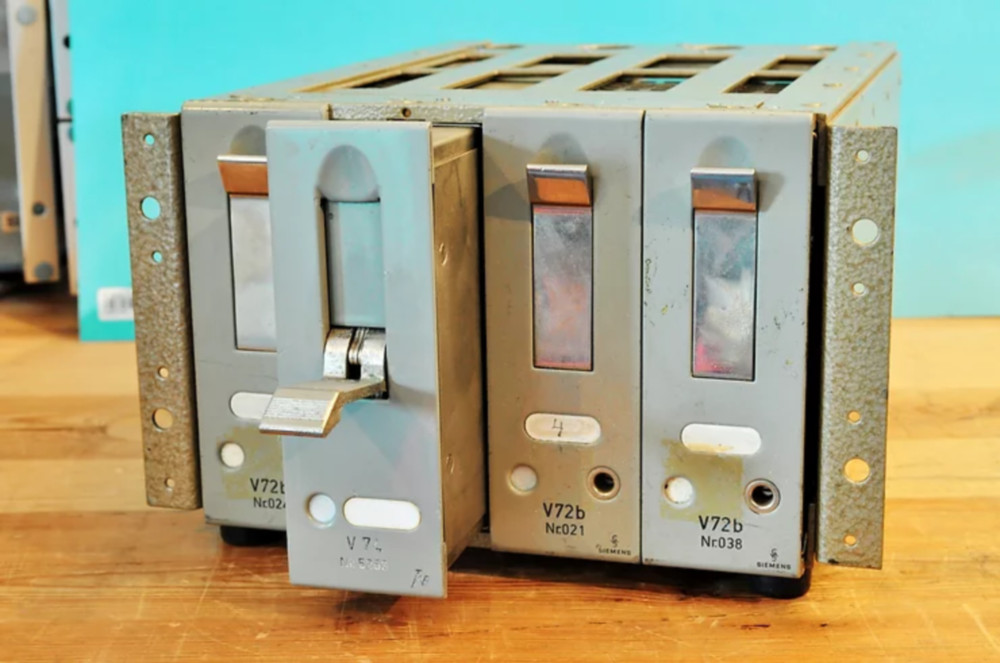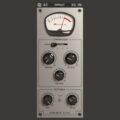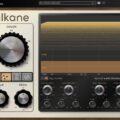
Sonimus' SonEQ is a plugin that helped me a lot when I first started mixing. Despite being free, I remember using SonEQ for quite a long time as it provided appropriate Input Gain utilization, flexible Pultec-style EQ, and subtle harmonic effects without being overwhelming.
For me, SonEQ became a touchstone for judging what elements a good plugin should have. I was fortunate to receive an NFR (Not For Resale) license for SonEQ 2 from Sonimus to conduct this review. I'll discuss how SonEQ 2 stands out compared to typical Pultec-style equalizers, and also mention the free version of SonEQ.
About Pultec-style EQ
First, I'll briefly talk about Pultec EQ, one of the most important tools in audio mixing. The so-called 'passive EQ', Pultec equalizer, is an analog product that gained immense popularity due to its unique operational method.

Many plugin manufacturers, including Waves and UAD, have released at least one Pultec-style EQ. The most important point of Pultec EQ is the technique of boosting and cutting the same frequency in the low range simultaneously.
At first glance, it might seem that cutting and boosting 100Hz at the same time would result in zero, but in Pultec EQ, a unique curve is created that gently emphasizes the bass while trimming the low-mid range without excess. This effect was particularly useful on vocal tracks.
The following products are examples of Pultec-style EQ plugins:
- Universal Audio Pultec Passive EQ Collection
- Waves PuigTec EQs
- Softube Tube-Tech PE 1C
- IK Multimedia EQP-1A
- Nomad Factory Pultec EQs
- Logic Pro Vintage Tube EQ
- Acustica Audio COFFEE The Pun
Basic Interface of SonEQ 2
SonEQ 2 doesn't boast the fancy Pultec equalizer design like the products listed above. Instead, it has a modern design that looks more like a digital equalizer.

However, SonEQ 2 clearly uses Pultec EQ techniques. Notably, the 'LOW' module on the far left allows you to simultaneously boost and cut at 20, 30, 60, or 100Hz.
The adjacent 'LOW MID' and 'HIGH MID' modules allow adjustment of the mid-range, similar to the middle section of the Pultec EQP-1A. However, the EQP-1A had the drawback of only being able to boost the mid-range. Therefore, another device called MEQ-5 was used to cut the mid-range.
SonEQ 2's LOW MID and HIGH MID don't seem to follow Pultec's approach in this aspect. While not specified in the SonEQ 2 manual, the manual for the free version of SonEQ mentions that this plugin was inspired by the API-550 equalizer. The MID modules in SonEQ 2 can cut and boost the mid-range, just like the API-550.
In particular, LOW MID operates in a Proportional Q manner (Q value increases as gain increases) like API, making it a very musical EQ to use.


LOW MID can adjust from 45 to 4000Hz, making it possible to reduce or increase the desired range, but it's also useful for removing excessive mid-range like the 'DIP' of MEQ-5. The HiQ button allows control of an even narrower frequency band.
HIGH MID, which can adjust from 400 to 9000Hz, can also be used for both cutting and boosting, but it was well-suited for lifting the mid-high range like the Pultec EQP-1A. (I've heard on the internet that it was inspired by Massive Passive, but this isn't confirmed)

While LOW MID and HIGH MID can versatilely control the mid-range, I personally found it appealing as it felt like using EQP-1A and MEQ-5 combined. It can be said that this design ensures the freedom of digital plugins while allowing users to easily reproduce their desired EQ style.
The 'HIGH' module also allows you to boost or cut at 6k, 8k, 12k, or 15k. If you use the HIGH MID module for boosting, you can cut with the HIGH module, or vice versa. Of course, it can also be used to slightly emphasize the 'Air' range.
Unique Features
While SonEQ 2 has the advantage of allowing a modern approach to analog-style equalization just by using the above four modules, there are other notable unique points.
Drive Module
The PREAMP module on the far right is responsible for the harmonic addition feature implemented in most analog modeling plugins.

Raising the DRIVE knob adds harmonics, but it's not an excessive distortion. When DRIVE is at 0, SonEQ 2 operates cleanly like digital equipment.
The DRIVE knob also slightly lifts the low frequency range. Therefore, the track may feel heavier overall, so you should use it in conjunction with other EQ modules considering this. The manual also describes it as a 'Low's Exciter'.

The 'WOOW' function might be a bit unfamiliar. It's said to provide a unique sound effect that can be psychologically perceived through phase distortion. However, it's recommended to use it only on the final master bus, not on individual tracks, as it can cause phase cancellation issues.
Module Reconfiguration, Addition, and Deletion
By default, when you turn on the plugin, LOW, LOW MID, HIGH MID, HIGH, and PREAMP modules are loaded. These modules can be rearranged. However, this doesn't change the routing order, it's just for visual convenience.

It's also possible to remove or add modules. Interestingly, you can add multiple instances of the same module. As shown in the image below, it's possible to load more than 10 identical LOW MID modules.

In this way, SonEQ 2 can be used like classic analog hardware such as Pultec or API, but it can also transform into a newly designed analog equalizer according to the user's taste.
Musical Q Value
One of the characteristics of analog EQ is the musically designed frequency bandwidth. Usually, bands generated in digital EQs all adjust Gain and Q with the same algorithm.
However, in SonEQ 2, LOW MID and HIGH MID have overlapping frequency ranges but different roles. For example, both LOW MID and HIGH MID can reduce 1000Hz. But these two implement different ways of changing Q value according to gain.
For instance, LOW MID can cause more sensitive and dramatic tone changes even with the same gain value change. On the other hand, HIGH MID generally creates a gentle and smooth curve, which can be advantageous for creating natural tone changes.
Oversampling and CPU Consumption
SonEQ 2 has x2 oversampling applied by default. At x2 oversampling, CPU consumption was 0.35% per individual track, and 0.17% without oversampling. At the highest oversampling setting of x16, it consumes 2% of the total CPU.

Oversampling plays an important role in preventing aliasing in analog plugins where harmonics are created. While SonEQ 2 is not a plugin that provides aggressive distortion effects, depending on how it's used, it can play a good role in ensuring audio quality.
Differences from the Free Version of SonEQ
Overall, SonEQ 2 has been upgraded to allow more functionality compared to the free version. The biggest difference is that while the free version of SonEQ has only one band that can control the mid-range, SonEQ 2 allows for more precise control with LOW MID and HIGH MID.

Excluding features like module addition and oversampling, the free version of SonEQ shares a similar concept with SonEQ 2. It shares all core functions including Pultec-style bass control, mid-range cut/boost, Air addition, and the drive section that functions as a 'Low's Exciter'. Unlike other plugins that try to impose many restrictions in their free versions, SonEQ seems to be trying to provide many features even in its free version.
Conversely, there are aspects where the free version of SonEQ is better than SonEQ 2. SonEQ 2 doesn't have a feature to increase Input. In the free version, you can create subtle saturation or strong distortion by raising the Input while increasing the drive.

I think that in the case of paid plugins like SonEQ 2, they probably assumed that users would have already handled gain staging to some extent in their mix. Similarly, SonEQ 2 doesn't have a built-in VU meter. While the free version of SonEQ provides the function of saturator+EQ for beginners, SonEQ 2 seems to focus on precise equalization.
Why Use 'Analog Plugins'
In fact, if you understand the principles, you can perform analog-style equalization using the bundled equalizer in your DAW.
And if you add a slight harmonic with a free saturator like IVGI, you could beautifully refine your track without spending money on analog plugins. Some people criticize analog plugins as money-making tools that rely on graphic design and sensibility based on this logic.
This is somewhat true. Rather, as the development of the digital plugin market has reduced the constraints on using products like 'Pultec EQ', people sometimes prefer analog plugins for no reason. There's also a problem of unnecessary processes being added to the mix due to the belief that it will unconditionally improve the sound.
Let's think about the meaning of 'if you understand the principles' mentioned above. If we were AI, we might be able to do everything with just one digital equalizer. But we don't predetermine everything from the start. A collaborating producer might suggest something new, a new instrument track might suddenly be added, or we might realize something is lacking during the mix.
I think the meaning of analog as 'something continuous and changing' can also be applied to methodology. Continuous change is created through interaction. Engineers interact with the mix, and plugin manufacturers interact with engineers through tools created with intention.
Therefore, in a good sense, equipment and plugins influence the direction of the overall sound and can characteristically change the mix.

Limited frequency range, intended Q value changes, purposeful interface are all things that can be seen in analog hardware. I think it's truly 'analog' when deep purpose and intention are revealed in the tools created by manufacturers. In that sense, SonEQ is a very welcome plugin for me.
This article was published in partnership with Monthly Mixing.




